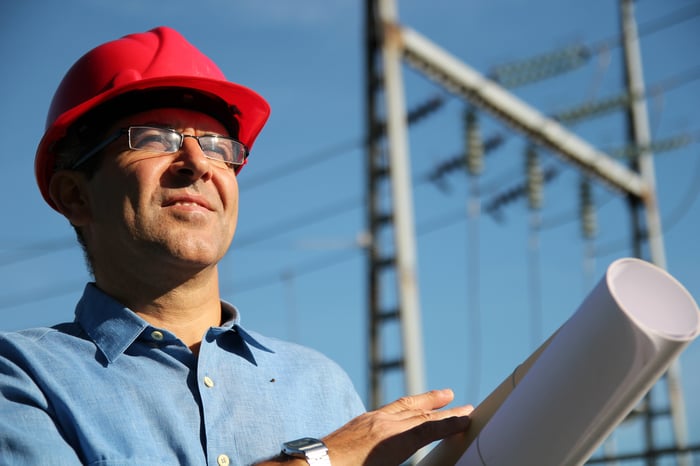AES Corporation (AES 0.80%) is anything but your typical power company. What it does differently, however, sets it apart in a way that could make it a perfect fit for your portfolio. Here's what you need to know about this unique utility and its 3.2% dividend yield.
The road less traveled
When most people think about a utility, a company with a government-granted monopoly to provide a region with electricity probably comes to mind. That's the conservative "widows and orphans" type of utility stock that investors expect to produce reliable income and slow (but consistent) growth over time. But as far as AES is concerned, you have to throw that image out the window.

Image source: Getty Images.
For starters, AES has a global presence, with operations in 13 countries. Around 36% of its adjusted pre-tax contribution (PTC is a company measure of financial performance) comes from the United States and utilities (the boring "widows and orphans" kind). South America makes up another 30% of that total, with Mexico and Central America at 20%, and Eurasia chiming in with 10%. There is a lot of geographic diversification here.
In addition to that, there's a unique business mix. Only about 15% of adjusted pre-tax contribution comes from what the company calls utilities, which are generally what you would expect them to be (though not necessarily located in the United States). The rest of PTC comes from contracted power operations, in which AES owns a power asset and sells the generation to others. Roughly 15% of PTC is tied to short-term contracts and 70% to long-term contracts. Selling power under long-term contracts is a relatively conservative business in which even cautious utilities are involved, but short-term contracts can be a little more risky. The average contract life across the company's contracted power business is around 14 years.
AES is in the middle of a major repositioning plan, like many utilities around the world. By 2024, it hopes to generate around half of its power from renewable sources like solar and wind. However, it also has a long history of being at the leading edge of technology. It currently has a partnership with Siemens, known as Fluence, that develops energy storage systems. This partnership has developed or been awarded contracts for 1.7 gigawatts of storage systems across 21 countries, which effectively increases AES' geographic reach even further than its core business.
Some caveats
There's no question that AES takes an interesting approach in the utility space. If your goal is to add a boring old utility to your portfolio, then this stock is probably not for you. However, if you are looking to invest in a dynamic power company that has the potential to grow relatively quickly because it operates in developing regions (notably Central and South America), then you might decide that it is a good fit. But there's things that need to be considered before you hit the buy button.
For example, less-developed countries can be subject to political and financial uncertainties that you wouldn't expect in the United States. Currency impacts are a notable ongoing issue for the company, with some years benefiting from changing relative valuations and some suffering. Meanwhile, Brazil and Argentina, two counties in which AES has sizable operations, are both experiencing material political and financial troubles which are only partially related to COVID-19. While it wouldn't be fair to suggest that the United States is immune to political and financial issues, it is larger and more stable politically. The U.S. dollar's prominent role in global trade is also a stabilizing force. These aren't knocks on AES, but something that investors will need to understand and accept as part of the business environment. So far, AES has managed to handle these uncertainties in relative stride.
AES Dividend Per Share (Quarterly) data by YCharts.
What you get in exchange for this added risk is, as noted, the potential for higher growth. Looking at dividends here helps, since generating dividend income is a core investment theme in the utility space. AES's dividend increased by more than 40% over the past five years, which is a fairly impressive number in the utility space. However, there are domestically focused peers with similar, if not better, dividend growth. So investors could get the same level of dividend growth without the foreign exposure and material exposure to contract-based businesses. AES' roughly 3.2% yield, meanwhile, doesn't particularly stand out relative to its peers. Although hardly a clear win for AES, it does hold up fairly well compared to other utilities on the dividend front -- but only if you can stomach the risk profile.
Spicing up your utility holdings
AES is probably not a good choice for conservative long-term investors. In fact, it's also likely to be a less-than-desirable pick if you want to add a single "core" utility stock to your portfolio.
However, if you are looking to add some diversification to your existing utility holdings, then AES starts to look pretty enticing. That said, you'll need to be able to handle some ups and downs based on its unique business model. At the end of the day, AES is an interesting option for the right investor, but it is definitely not the right stock for every investor.





